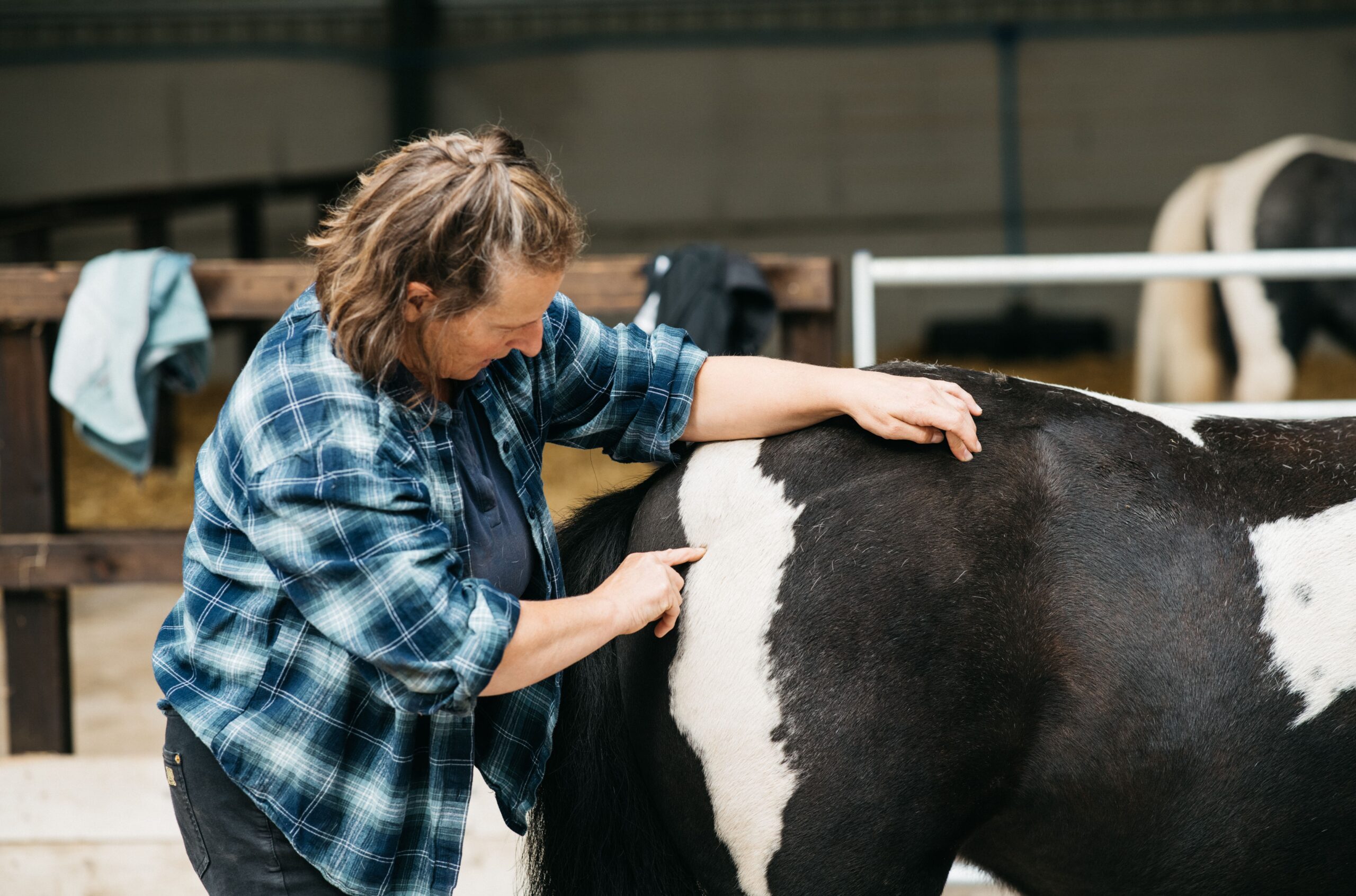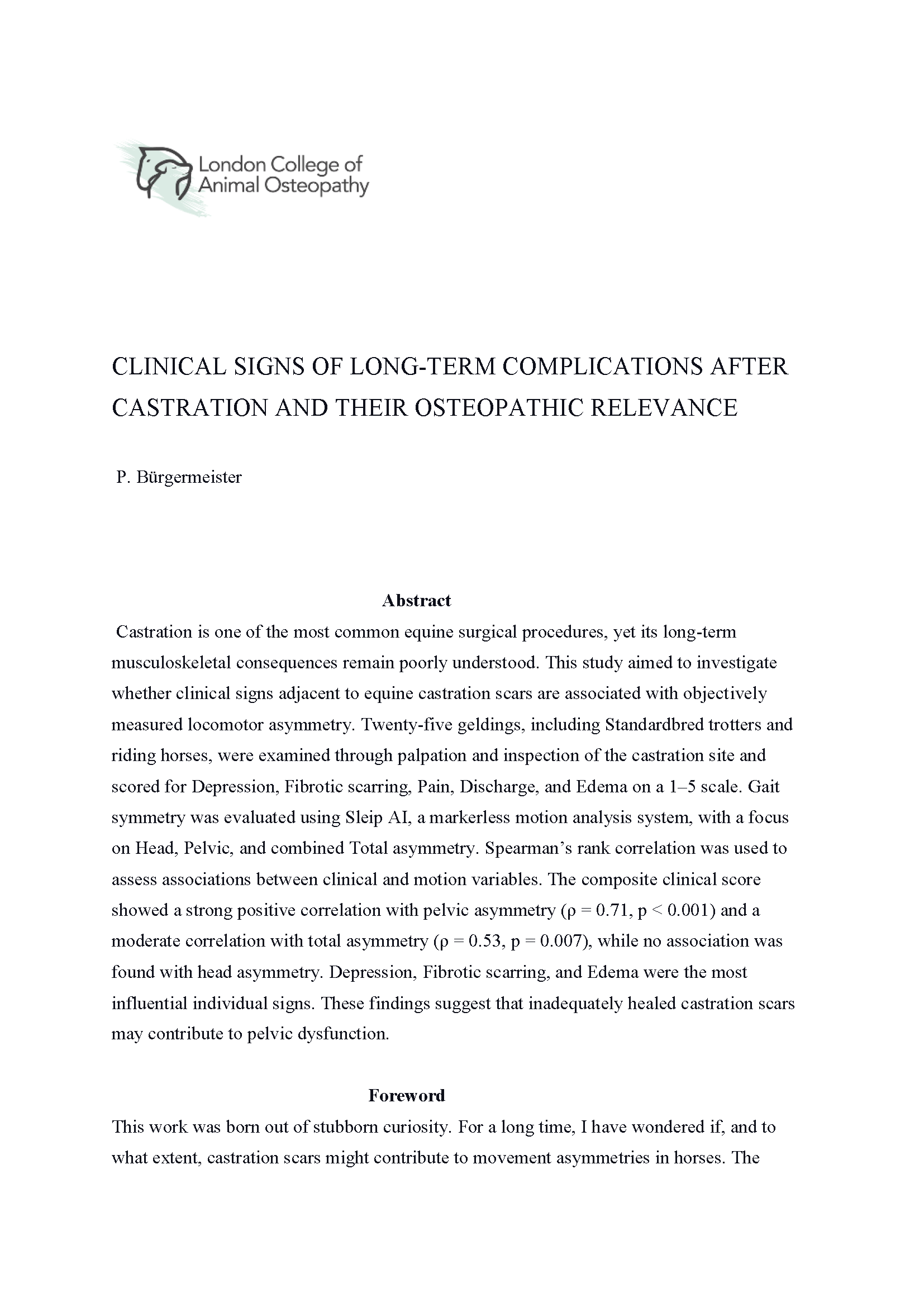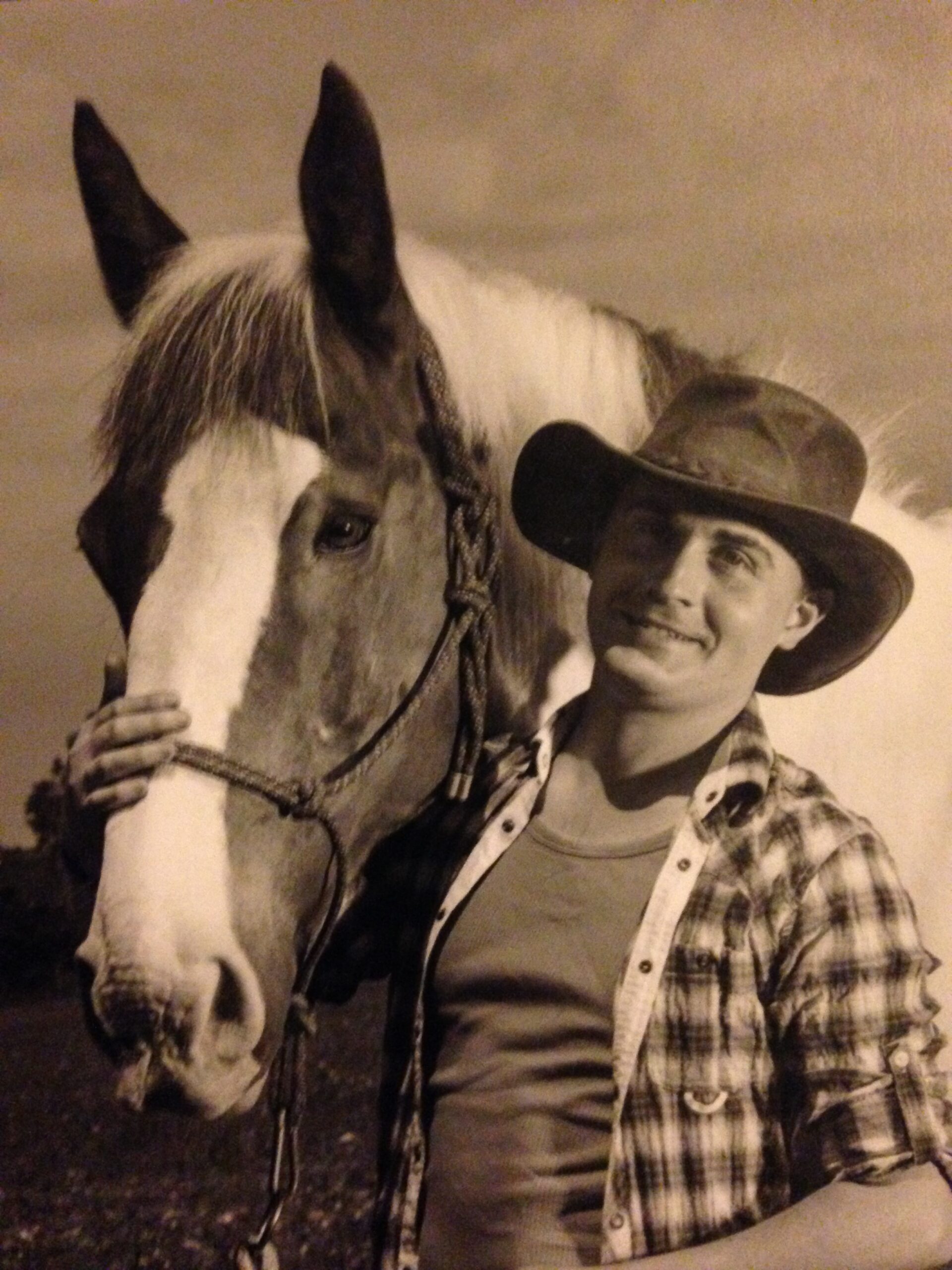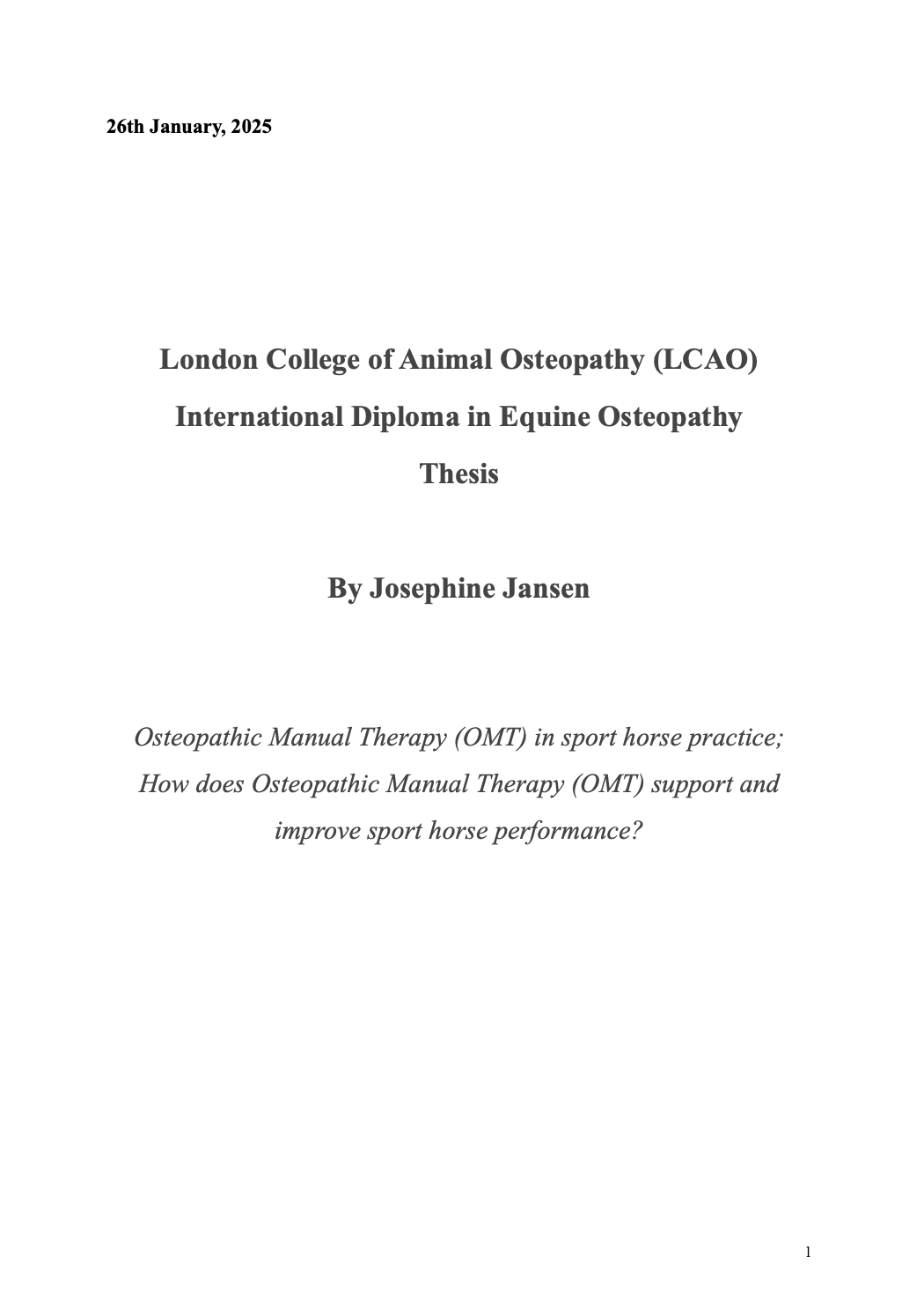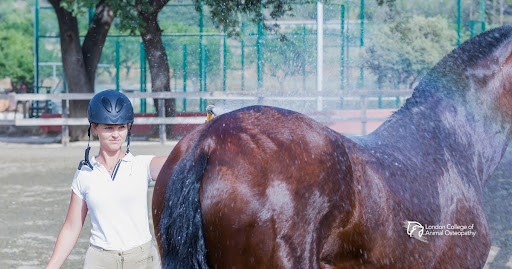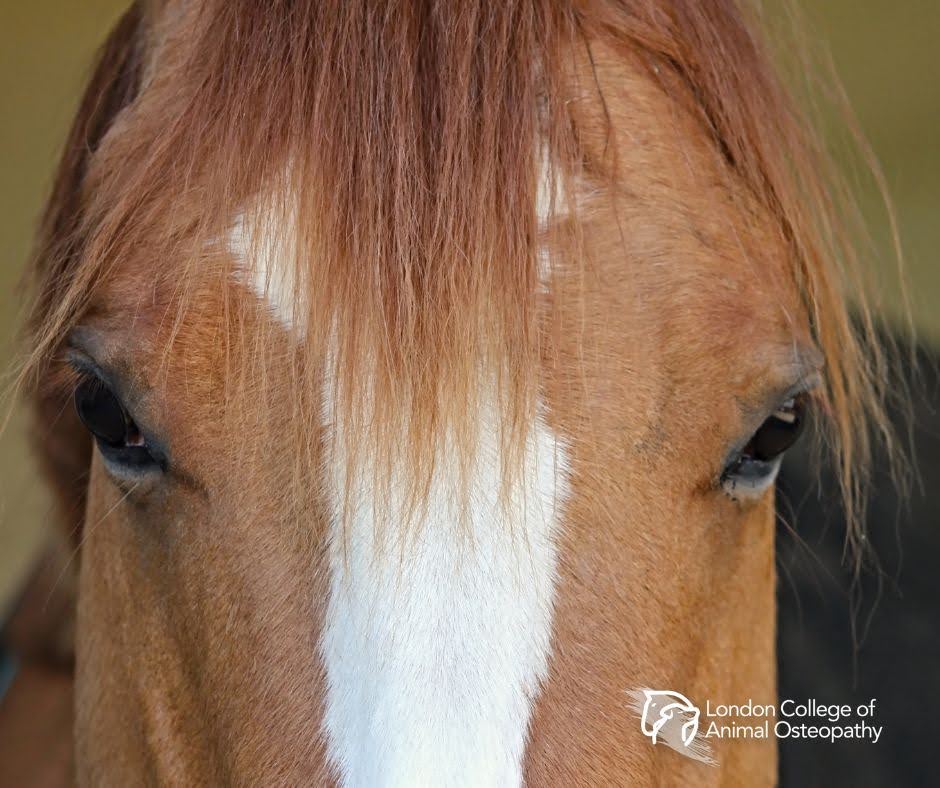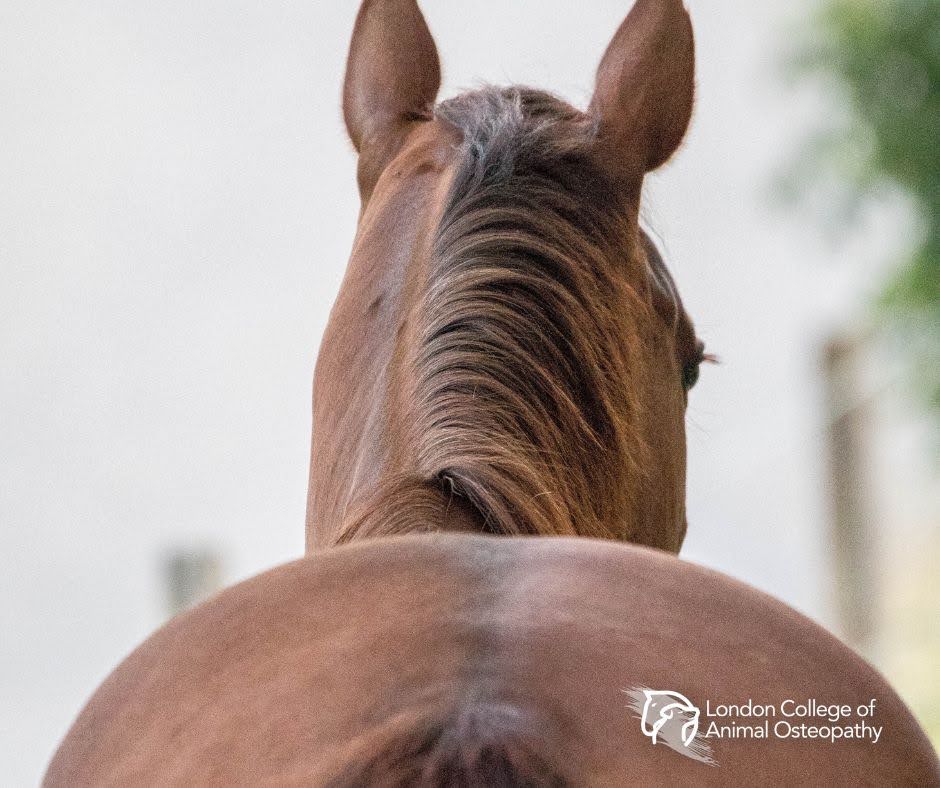Dealing With the Loss of an Animal as an Owner or Practitioner
This article will be a little different and sit apart from the more academic ones. I will be including my personal experience here and opening up about the impact of grief for an animal loved one. I warn anyone who is suffering grief at the time of reading this that it may trigger emotions; however, you may even find it cathartic and validating. And so we delve into the unfortunate inevitability of the death of our animal companions.
I have heard it said once by a very experienced horse woman I had the honour to work with, “When purchasing an animal, we buy into inevitable grief”. The vast majority of animals that we bring into our family won’t outlive us. There are, of course, exceptions, such as long-lived reptiles like the tortoise or some breeds of bird; some people may also have animal companions in their older age, and so then the animal may outlive the owner.
The unfortunate truth is that many of us, as animal owners and keepers, will be touched by loss at some point. We may even be the ones responsible for making a decision to put an animal asleep in the interest of the animal and to avoid suffering.
The conscientious owners (the only ones who should have animals) will endeavour to keep their animals fit and healthy for their whole lifespan, investing in the right diet, activities, therapeutics, and environment. Of course, even the most well-cared-for animals may fall foul of injury or systemic illness of some kind.
One important thing to accept is that sometimes these illnesses and injuries are not any fault of ours, and although we can feel guilt and obsess over “what could I have done?”, that kind of thinking and worry really isn’t serving the animal, and the focus should just be on recovery.
My Recent Loss
This is difficult to write, but in some way, I think it could be therapeutic. 4 weeks ago from me writing, I lost my horse, Shandy. He was 30 years old and had been in really very good health for almost his entire life.
30 is a pretty good age for horses, and people often mentioned how he really didn’t look old; I, however, could see the age changes as I knew him inside and out. He had developed grey patches around his face (he was skewbald with a brown face), showed a few areas of age-related muscle loss (sarcopenia), took a little longer to loosen up when getting out into the field, and I felt he had a somewhat more mellow demeanour.
Shandy was loving his retirement. I had always told him that he would have a lovely retirement and live the life of luxury, and be a horse. Shandy had given me the most wonderful experiences, and we shared so many treasured memories; it wouldn’t be an exaggeration to say that Shandy shaped who I am today.
I have owned Shandy since he was three years old, so I was just a teenager when we got him. With the help of some great trainers, I trained him myself and built the strongest bond possible. When I then attended college to train in horse management, Shandy came with me, and we gained even more support and development. Staff and teachers at the college all fell in love with his calm and loving personality, as did all my student colleagues. These were, of course, really formative times in my life and discovering who I was, and Shandy “held my hand” throughout all of it.
Together, Shandy and I tried many different sports and pursuits. He was a successful mount in Dressage, he could jump anything you faced him with, and was a dream to hack out alone or in company. Shandy even became a very capable driving horse, and we had many fun times as a family out in the lorry at driving events.
Shandy got featured in Carriage Driving Magazine, and we drove alongside Prince Philip, the Duke of Edinburgh, at Windsor Park training. Of course, it wasn’t the success in shows and events that was important; it was the fact that he offered everything, all of himself to anything I asked and did so with interest and joy. Shandy trusted me, and I trusted him.
I can’t overstate how much Shandy and I had formed a connection that was unbreakable. People would often be impressed when Shandy would perform activities that Natural Horsemanship trainers spend years training their horses. Playing at liberty and riding bareback and bridleless with total trust, and still performing all the same dressage movements and jumping with no tack. Our bond had created this ability through pure trust and love without having to even train it.
If I went on holiday, I would always be calling the people caring for him to see how he was, and the first thing I wanted to do when returning was to go see him. When I would leave the stables at the end of a day, I would go back to the stable door two or three times to either check he had everything he needed or just to cuddle him once more before driving home. I could go on writing about our life together, but it would end up being a book; needless to say, we were inseparable, and he felt part of me.
Later in Shandy’s life, he developed a few issues. He had begun to get arthritic changes in some joints, and as many older horses do, he developed dental issues that needed some more regular check-ups than the routine ones. These were not major problems but just the age-related changes one would expect.
However, as Shandy transitioned into retirement from riding and driving, I noticed some irritated skin patches, and some were not responding well to simple grooming and topical treatment. We had a number of biopsies taken and many blood tests, and our very attentive Vet diagnosed him with Pemphigus Folliculosis.
This is an autoimmune condition where the immune system attacks the extracellular matrix that supports the skin cells. It leads to very flaky skin and even sores, and the leaking of interstitial fluid through the skin and leaving the skin more open to infections. There can also be more systemic inflammation and immune attacks on other tissues.
He required some heavy steroids and immune inhibitors alongside antibiotics, but his body responded well, and with attentive skin care and grooming, the condition went into remission. I was so happy that his condition had improved, and we were no longer getting any flare-ups. He was happy and healthy again.
Around the time that Shandy turned 30 years old, I began to notice some reluctance to stand up and activate his hind legs. I put it down to the arthritic changes and even asked the Vet’s opinion, who agreed this was most likely. He was not showing signs of lameness or other changes.
There was a very slight progression in the lack of engagement, however, and I soon noticed that from time to time, he would struggle to make tight turns in a balanced way and had begun to brush his hind legs when walking faster or trotting in the field. Things really became a concern when I noticed that he had dropped his penis out of the sheath, and it had become swollen.
I thought perhaps it was a fly bite or insect sting, and the swelling meant that he couldn’t retract it properly. I called the vet, who said to try contrasting heat and cold and a gentle massage to drain the fluid and just to keep an eye on it. The following day however it had gotten bigger and we noticed he had not urinated much at all.
There were small amounts of urine coming out when he walked and moved. This meant there was urine staining on his back legs and subsequent skin irritation. I immediately called the Vet again who catheterised him, draining a huge amount of urine out with quite a lot of sediment in the urine. The relief on Shandy’s face was clear. The Vet said he would come again in the morning to see him again.
The following morning there had been some decrease in the swelling but he was still hanging the penis out. Over the next two days, the Vet came and drained the bladder and I continued with the after care in the hopes that the swelling would go down and he would go back to normal function. It simply worsened and he had also begun to lose coordination in his hind legs, all signs that this was a neurological lesion of some kind that was causing improper bladder control and loss of hind end function.
On the third day, the Vet came with another Vet colleague and a Veterinary student. They catheterised hoping to try using the scope for the second time as the first time was not clear. The urine that came out was full of blood. There was also mucous and mucosal lining coming out, this showed that there was significant deterioration of the bladder and had there been a haemorrhage, this condition would deteriorate very fast.
This coupled with a noticeable lack of hind end coordination in a 30 year old horse, there was only one option. I would never allow Shandy to suffer and the Vet said that the condition could become extremely serious within 48 hours.
We made arrangements for the euthanasia and I spent the last bit of time I had with Shandy cuddling and grooming him, giving him treats and telling him how wonderful he was. The Vets did an amazing and respectful job and Shandy passed on peacefully.
I had experienced losing small pets as a child (hamsters and alike) and even the loss of two family dogs, but this was different, I felt as though I had lost a part of me. Shandy was there with me for most of my life and I couldn’t picture what life looked like without him. There was some benefit to it all happening so fast and not being a long drawn out illness as it didn’t give me time to second guess anything or debate if I had done everything I could. However, the speed of his going from happy and apparently healthy horse to being put down also felt so sudden emotionally that it was like a gunshot.
The moment in the day when he was put down, I felt like something had been pulled out of my chest, a hole seemed to form and it was like a vacuum in my body. This void stopped me getting a full breath and I felt as though I was on the verge of complete panic. The one thing that I had held so tightly to for most of my life had gone and I realised how unsafe that felt.
As a lot of people with horses do, I had taken a lot of my self identity from having him. I was Chris the horse person…
I honestly felt that I didn’t actually know who I was without Shandy. I actually still don’t know as I write this but I guess that the journey. I couldn’t go back to the stables for a while as everytime I thought about it, I would feel sick with anxiety and sadness. I had to go in time to bring home his equipment and supplies. In the meantime I tried to go about day to day things but couldn’t shake the sense of despair and emptiness. I would have given anything to just touch him again, to smell his coat and hug his face.
Clearing out the storeroom and stable was one of the hardest things. I could almost feel him there beside me in the stable as I moved things around which was both a comfort and a source of pain. Everything still smelled like him and his hair was on all the equipment and grooming supplies.
People at the stables meant well when they would come and express their sadness and tell me that if I needed anything to “just ask”. However, the stream of pity and condolences actually made me feel worse and I would hide away from sight if I saw another owner turn up. Tasks like taking his name plate down from the stable door were filled with conflict. I would feel my hands doing the task while my heart was saying “no” as if this was somehow making it real and permanent.
The World Keeps Spinning
When we are in grief, it can feel as though we want the world to just stop for a while so we can gather our thoughts, or maybe just recede from the world and let it go on while we process. Some people will have other animals who rely on them and this can be a very good way of processing while maintaining some degree of routine.
The reality of course, is that no amount of “stopping” everyday things will bring them back, the need to process is however vital. Personally I have found since losing Shandy, that the best thing I could do was stick to a daily routine; everyone will be different though.
It is so important to remember that some people simply won’t understand the importance of our animals. Some people who do not have pets or have not been “animal people” won’t understand that our animals become part of our family and are no less loved than our human family.
Despite what some may think, it is completely normal to mourn the loss of your animal as much as the loss of a person in your life, we must not feel guilt over the time and input we need to recover. Of course “recover” is an odd word to use as it implies that at some point you become OK about it all.
I prefer to say we learn to accept or we move beyond sadness. I am finding more and more now that I am looking at photos of Shandy and smiling while I remember the happy memory associated with it; previously I had found it too painful to even look. This doesn’t mean I am “OK” about this, it means that I can see that the loss doesn’t take away the precious memories and time we had.
I think that keeping a routine for your days is a healthy approach to grief. This doesn’t need to be a routine that forces you into “normality” (whatever that is), it just means that you have a set of things to do or engage you that keeps your body moving and your mind in the present.
This could be as simple as making sure that you have a bite of breakfast everyday or do some dusting/cleaning. The routine takes you out of the inactivity and circling thoughts. Part of that routine can be journaling, this is a very effective way to articulate your thoughts and also allows you to evidence your levels of acceptance.
I advise also putting your nice memories in the journal as this will be therapeutic and useful in the longer term. Your routine can also include time to be sad and to cry or sleep or just switch off. It is just as important that your mind and body have rest time to heal, your physicality will also be affected by the emotions you feel (more on that soon).
During these rest periods, it is sometimes good to remain alone to give you the peace to just settle. However, it is also a really good idea to include time with friends or family. They should be people who understand you and will not judge or coerce you into doing what you are not ready to do.
Losing a loved one is very isolating and times can feel lonely, humans need other humans and having company to simply be present with you and show you support is deeply healing. Remember your “social battery” though, this energy and ability to be around others may feel depleted and you might need to warn those you surround yourself with that you may need to limit your time.
As within, so without – your body and mind
In Osteopathy, we know that the mind and body are not separate things but a continuum of phenomena that are expressions of the you in this world. Your grief can manifest in physical symptoms that may be minor or can be quite limiting. We must understand that emotions lead to chemical changes in the body. Our thoughts and emotions will alter the hormonal balance, blood chemistry, pain sensitivity, gastrointestinal function… the list goes on. Equally these symptoms can then become a stressor in and of themselves and exacerbate our mental state. Baring this mind, we can use the principles of Osteopathy to our advantage when dealing with the grief and sadness from losing our companions.
It may seem common sense to look after the body in times of stress. We almost instinctively want to pamper ourselves and indulge to comfort our disturbed feelings. This is a way of using the physical body as a tool to affect the mind.
The most effective methods will be those that stimulate the parasympathetic nervous system which calms the body and rests the mind. These methods could involve things like getting a massage, deep breathing exercises, Yoga or some mindful activities like painting or craft. Some people find aromatherapy useful in times of struggle but do remember that smell can stimulate memory very easily and may become overwhelming, it’s a good idea to speak with an aromatherapist when considering this intervention.
An Osteopath can provide general Osteopathic treatment that can be aimed at parasympathetic modulation. This shows the expanded scope of Osteopathic interventions beyond the simply musculoskeletal. Osteopaths can observe the physical expressions of the body that are manifestations of stress and emotions. Our body can show tensions, postural changes and subsequent discomfort that, when ameliorated, can bring a sense of calm and wellbeing that helps us cope mentally.
The Professional’s Feelings
It’s not uncommon for the professionals that help you with your animals to feel a sense of grief as well. Your Osteopath, Trainer, Vets or any other professional who spends considerable time and effort on your animals will undoubtedly form a bond with them albeit less deeply at times. Professionals try to maintain a distance emotionally to remain objective however we are only human and this can be difficult especially if that animal wants to form a bond too.
Of course, as an Osteopath, I try to maintain boundaries and I often explain to owners how my advice and discussions are based on evidence and the animal’s best interests. But it is important to remember that in dealing with owners (particularly when their animal is unwell) we must consider their emotions and part of the job is often “holding space” for them to explain their concerns and feelings. Never underestimate the effect of empathy leading to taking on other’s emotions, this can lead to burnout in professionals.
Due to the clear connection that professionals build with the animals in question, it can be nice to suggest meeting to talk about them after the animal has passed but only when you as an owner feel ready. This can really help in the grief process and I have found it particularly useful in both remembering Shandy and feeling gratefulness. Sharing your feelings with someone who knew the animal well can be truly cathartic. As a professional in this situation however, always reflect on your boundaries and ensure professionalism combined with empathy.
In Conclusion
The first thing I want to say to anyone out there dealing with the loss of a loved animal companion is that I’m very sorry for your loss. Remember that grief is a process and avoiding your feelings can actually make things feel worse. Take your time with everything and allow yourself to feel fully.
The time soon after a loved animal passes is not one in which to make rash decisions either, some people may feel pressured to move on or even have another animal. These decisions are ones only you can/should make. Try to remember routine in your day and write about your feelings so as not to internalise everything wearing out your battery.
There are always people and professionals to reach out to. Your doctors, counsellor, friends and family are the support that you should use and never feel that you need to suffer alone.
They are never truly gone, just waiting on the other side…
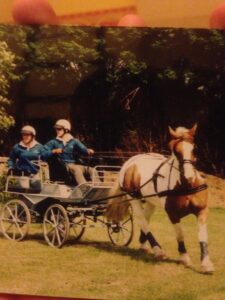
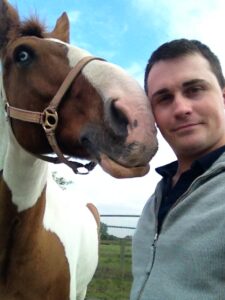
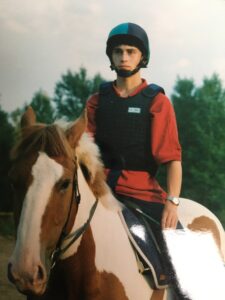
Osteopath (DO), Equine Therapist and Lecturer at London College of Animal Osteopathy
Not Just a Hose Job: The Right Way to Cool Dogs and Horses in Hot Weather
Some myths are hard to kill. Every summer, they resurface, usually in Facebook threads with 150 comments and rising tension.
“Never hose a horse’s back!”
“Don’t pour water on dogs; it traps the heat!”
You’ve probably seen it. Maybe even argued it. So let’s cut through the noise and get down to what actually works, what doesn’t, and when the stakes are high enough to call the vet.
First: Heat Kills, Fast
Hyperthermia isn’t a vague risk. It’s a medical emergency. In dogs, a body temperature above 39.5°C (103.1°F) is considered abnormal, and above 41°C (105.8°F) is classified as heatstroke, with a high risk of organ damage, coagulopathies, and CNS dysfunction (1)(2).
Horses follow a similar pattern. Heatstroke is generally diagnosed when body temperatures exceed 41.5°C (106.7°F), with neurological signs and cellular injury likely to follow soon after (3).
So no, this isn’t just about comfort.
Signs You’re in Trouble
Whether it’s a dog or a horse, these are red flags:
- Rapid, shallow breathing
- Bright red (or very pale) gums
- Weakness, wobbliness, or collapse
- Vomiting (dogs), diarrhea (sometimes bloody)
- Seizures or confusion
- No longer sweating (in horses) despite high effort
- Red gums/tongue (dogs & cats)
- Panting (dogs & cats)
- Drooling (dogs & cats) (9)
- Collapse
If you’re seeing these? This is not the time to “let them rest in the shade” and reassess later. Call a vet immediately. Start cooling while you wait.
Cool Fast, Cool Properly
Let’s talk methods. Because yes, how you cool matters, but probably not in the way you’ve heard.
Horses: The Continuous Cold Water Debate
Here’s the short version: hosing is good. Repeated hosing with cold water is better. Scraping? Optional. And no, cold water doesn’t cause shock.
A number of studies have confirmed what we now know works: cold water applied continuously and repeatedly is one of the most effective ways to lower core body temperature in horses after exercise in hot conditions (4)(8). And no, you don’t have to avoid the large muscles or scrape between rounds. In fact, scraping actually slows the cooling process.
What to do:
- Move the horse into the shade
- Hose cold water over the entire body
- Repeat continuously until rectal temp drops below 38.5°C
- Use fans if you have them
Stop scraping. It’s not doing what you think it is. Scraping was useful when water was scarce or hot; today, it just slows you down.
Dogs: Water Is Not the Enemy
The claim that water “traps heat” on dogs? It’s a misinterpretation of evaporative cooling. Sure, if you pour water on and leave it without airflow, it won’t help much. But if you’re using cold water and creating airflow (with a fan, breeze, or toweling), it’s effective (5).
What to do:
- Get them into shade or air con
- Soak with cool water: belly, armpits, paws
- Use a fan or breeze to promote evaporation
- Offer water to drink (but don’t force it)
- If temp >40°C (104°F), get to a vet now
- Cool water immersion if the dog is otherwise young and healthy (9)
- Hosing with cool water (ensure it is running cool before applying)
Don’t wrap them in wet towels. That insulates heat unless you repeatedly change them. Other methods, such as those listed above, are more effective. And don’t wait for panting to “settle”; panting alone doesn’t cool enough in high humidity. If in any doubt, call your vet immediately as further intervention may be necessary.
Common Myths (And Why They Stick Around)
Some of these beliefs have been around for decades. Let’s unpack a few:
“Cold water causes shock.”
This comes from confusion with immersion shock in humans. Animals don’t respond the same way. Gradual cooling doesn’t increase the risk of shock; it reduces the risk of organ damage.
“Scraping water is essential.”
Only if you’ve got gallons of hot water and no breeze, otherwise, keep spraying (4).
“Cooling must be slow.”
Nope. Rapid cooling saves lives. Delays kill (1)(4).
Other Factors That Raise Risk
Even well-cared-for animals can overheat. But some are more at risk:
- Brachycephalic breeds (Pugs, Frenchies, Bulldogs)
- Horses with anhidrosis (poor/no sweating)
- Obese or heavily muscled animals
- Thick-coated breeds in humid weather
- Older or chronically ill animals
And don’t forget: if they’ve overheated once, they’re more vulnerable next time. Heatstroke causes cumulative damage.
Final Thoughts: Don’t Wait to Be Sure
By the time you’re sure it’s heatstroke, you’re probably already late. When in doubt, cool and call. You won’t regret being wrong, but you will regret being too late.
Resources
1. VCA Animal Hospitals. Heat Stroke in Dogs. https://vcahospitals.com/know-your-pet/heat-stroke-in-dogs
2. Pathophysiology of heatstroke in dogs – revisited. PMC, 2018. https://www.ncbi.nlm.nih.gov/pmc/articles/PMC5800390/
3. Marlin, D.J., & Nankervis, K. (2002). Equine Exercise Physiology. Wiley-Blackwell. Summarised in: AAEP Guidelines on Heat Stress: https://aaep.org/horsehealth/heat-stress-horses
4. Marlin, D.J., Scott, C.M., Roberts, C.A., Casas, I., Holah, G., & Schroter, R.C. (1998). Post exercise cooling strategies in hot, humid conditions. Equine Veterinary Journal, 30(S27), 337–340. https://doi.org/10.1111/j.2042-3306.1998.tb04426.x
5. ACVIM / VETgirl. How to Treat Heatstroke in Dogs. VetGirl Veterinary Continuing Education blog. “Heatstroke is defined as a non‑pyrogenic elevation in core body temperature greater than 105.8 °F (41 °C) along with central nervous system dysfunction.” https://vetgirlontherun.com/how-to-treat-heastroke-in-dogs-vetgirl-veterinary-continuing-education-blog/
6. Veterinary Voices UK. Cool, Icy, Cold or Tepid? What’s Best for Heat Stroke? Myth‑Busting blog post, June 26, 2024. “Pour, hose or if possible immerse the pet in very cold water… Do not drape in towels and leave them in situ.” https://www.vetvoices.co.uk/post/cool-icy-cold-or-tepid
7. VetCompass UK – Heat-Related Illness in Dogs: Risk Factors and Clinical Signs. https://www.vetcompass.org/media/1312/heat-related-illness-dogs.pdf
8.Vet Times (2022). Don’t be afraid of the hosepipe – cold water won’t cause shock in horses. https://www.vettimes.co.uk/news/dont-be-afraid-of-the-hosepipe-cold-water-wont-cause-shock-in-horses/
9. Royal Veterinary College (RVC). Heatstroke in Dogs and Cats: Fact File. Royal Veterinary College Small Animal Department. “Dogs and cats can suffer from heatstroke, a life-threatening condition where the body temperature increases … organ failure and even death can occur.” https://www.rvc.ac.uk/small‑animal‑vet/teaching‑and‑research/fact‑files/heatstroke‑in‑dogs‑and‑cats
Headaches and Headshaking in Equine Patients
Owners and riders of horses may, at some point, experience the frustration of not knowing what to do in the event of their horse becoming a “headshaker”. There can be many different reasons for horses to head-shake, and so the most important thing is to work with the Vet and other paraprofessionals to ensure a cause (or likely cause) is found.
Head-shaking can become dangerous in extreme cases by unbalancing the horse, leading to potential falls, secondary trauma through head impact, or potentially injuring a handler or rider. The causes of headshaking can also create learned behaviors that become very hard to decondition.
Headshaking
The presentation of a head-shaker will vary, but many clinical signs are common. Most head shaking will be up and down on the sagittal plane, while some may twist and rotate at the same time.
Sometimes the actual action of the headshake can help to identify a cause and isolate maintaining factors involved. The action of headshaking is sometimes quite violent and sometimes just a bobbing action; however, even the most light of headshaking will, over time, produce secondary concerns.
Veterinary attention will seek to rule out other causes before concluding a headache. It is important to remember that a headache could arise as a result of another initial cause. Some potential triggers for headshaking could include:
- Mites (in the ear)
- Otitis media/interna/externa (ear infections)
- Ocular conditions
- Guttural pouch infections
- Dental issues
- Rhinitis
The list could go on… (Lane and Mair, 1987)
Obvious signs of infection, both clinically observed and through lab testing, would not discount a headache, as pain could be a secondary factor and maintain or exacerbate the head shaking.
The action of headshaking in horses can often become more noticeable or prevalent during exercise, often showing no signs at rest. There may also be a seasonal difference in symptoms, which may indicate an allergic rhinitis present. Around 60% of headshakers have shown spring/summer seasonal worsening of symptoms (Roberts, 2019).
Headaches
There can be a multitude of factors that lead to headaches in horses. The type of headache will depend on the pathophysiology of the causes, but various types can lead to headshaking behaviours.
Potential causes can include:
- Dental issues
- Sinusitis
- Cervical spine dysfunctions
- Poll issues
- Meningitis
- Space-occupying lesions – Tumours, Abscesses
- Cranial trauma
- Neuralgia
Clearly, with some causes, lab testing and veterinary clinical examination can make the definitive diagnosis to allow for treatment. However, sometimes the cause or even causes of the headache can be more elusive, and it may require a process of elimination type approach.
Headache pain can be worse on exertion, and so horses may react more when ridden or driven. Even a mild headache can affect the horse when under saddle or in work, and this impact can often be misconstrued as a behavioural issue. Of course, no amount of training will fix a headache.
Central sensitisation
When we consider the reactions of the horse who is suffering from a headache, they may not seem entirely congruent with the present trigger or obvious trauma/condition. This may be due to the pain sensitivity being “dialed up” internally. Central sensitisation is a state of heightened responsiveness in the central nervous system, which can amplify pain signals.
There may not be present inflammation or tissue damage, but hyper-excitability of the nervous system can signal the same level of pain as if there were severe trauma.
The causes are many and complex, and the study of this Nociplastic pain (as it is now often called) is continuous. Hormonal imbalances are sometimes highlighted as a trigger, as are chronic inflammatory states; however, there can be a genetic predisposition or even psychological influences.
One way to imagine the process taking place is to think of the nervous system like pathways through a dense forest. If someone walks a particular pathway every day, treading down the plants and clearing the route, then the pathway becomes easier to navigate. If a nociceptive (pain) pathway is continuously stimulated, then this same phenomenon could be responsible for the increased sensitivity. In this sense, it is easy to see how even a rider’s or handler’s activities around the horse could lead to sensitivities.
Osteopathy for Headache and Headshakers
As discussed in previous articles, and is always the case, a proper veterinary diagnosis is essential before we, as Osteopaths, aim to assess and treat. Vets often refer to Osteopaths and other paraprofessionals for this kind of condition, as a multi-disciplined approach is often the best course of action.
Osteopathic assessment of the horse may be able to isolate a causative factor and maintain factors within the head and neck, and so treatment may be only regional. However, there may be wider factors that the Osteopath can address. There may be postural concerns that are impacting the horse’s head and neck positioning; these could be a result of spinal restriction, foot and limb balance, or an injury.
If the horse’s head and neck position is affected to the point of making compensatory patterns, then this could, in turn, trigger headache pain. There is also the possibility of jaw alignment or the hyoid apparatus being affected by more distal structures due to large muscle connections with the shoulder and neck. Jaw pain or temporomandibular joint dysfunction could trigger headshaking.
The key factor in a treatment being Osteopathic is that it is guided by the principles and philosophy of Osteopathic medicine. The body functions as an interconnected unit, therefore, the practitioner who is aware of this may find triggers and causes that seem as though they would be far removed from the symptomology. It is a case of tracking what is found in a logical way to the presenting complaint.
With the trigeminal nerve being a major factor in a large number of equine headache cases (Newton, Knottenbelt and Eldridge, 2010), the Osteopath may seek to find areas where the path of that nerve is compromised. This perversion of function could be through compression or stretch of the nerve, for example.
Remember that structure and function are reciprocally interrelated. The compression or malposition of the nerve structure will alter the function, resulting in pain or numbness. Various structures can compromise nerve pathways, including muscle, bone, fluid swelling, and space-occupying lesions like tumors.
If we find that neural pathways are being perverted by muscle tension, then we can apply soft tissue release techniques to alleviate pressure on them. To be complete, however, we may want to ask the question “why is this muscle/muscles doing this?”.
There will be a configuration that requires the muscle to be in this state; our work can then seek to discover why. This configuration could be a postural or traumatic positioning that necessitates it, or it could be environmental, such as horses’ feeding position or tack influences.
While a headache that is caused by temporomandibular joint (TMJ) dysfunction may be treated by articulation of the joints, release of the masseter, temporalis, and pterygoid muscles, the actual reason for the joint dysfunction may be further away.
It might be that the TMJ dysfunction is caused by stress and subsequent jaw clenching and tooth grinding. This could be found within the case history and questioning when the owner mentions the horse is grazed alone and spends time walking the fence line, and calling. The practitioner may suggest a gradual introduction of a field companion to allow for natural behaviour to flourish and reduce stress.
What can we do to avoid headshaking?
There will, of course, be some cases of headache and or headshaking that will be beyond our control to avoid, such as traumatic injury or neoplastic (cancer).
Our role as owners and keepers of horses is to ensure that all possible precautions are taken and that any signs of illness are picked up on as soon as possible.
Much of the time, it is education and awareness that help to improve horse care and welfare. Many owners are not aware of the intricacies of tack fitting, and of course, professionals train for years to become proficient in this. Some simple checks can help, however.
- Check the pressure of the bridle at key points of contact, such as the poll, nose band (if using one), and around the ears.
- Ask a professional (saddler or trainer) to help you fit the bridle and ensure that the position of all parts are correct.
- Check for any sharp or irritating parts of the tack, such as loose stitches, sharp edges, and bulky straps.
- Try different types of bridle sets up and materials to see what suits your horse best.
If your horse is sensitive to dust and pollen, then you may find that keeping your riding or exercise to times of the day when pollen count or dust is lower is best. You could also investigate the use of nose nets or applying pollen capture gels around their nostrils. Nasal irritation can be a cause for headshaking and so try keeping their nose clean with a soft sponge and clean water to gently clean around the other part of their nostrils.
It is good practice to regularly get your horse’s teeth checked by a vet or equine dental technician. Remember, however, that only vets can perform certain dental procedures. Some younger or older horses may need checking on more regular intervals, around 6 months. Other horses may be able to have their teeth addressed annually. The important thing is to ensure you follow the recommendations from your vet.
Having a good grooming routine helps you to investigate your horse’s reaction to touch around the head, check for signs of mites or insect bites, and look for any signs of injuries. Some Osteopaths will suggest scanning with your hands when grooming, as you can pick up things like temperature changes or lumps and bumps. This can often find potential causes of headshaking and headache before they become problematic.
Some owners will keep an equine specific thermometer in their first aid kit, and this can be useful to monitor changes that can occur during infection. Some horses can develop guttural pouch or dental infections, and this can create pain and headshaking.
If you notice signs of swelling around the jaw or face, then this can also be a sign of infection. Other signs to watch out for are general malaise, feeding problems, dehydration, dull coat, and nasal discharge.
Conclusion
There can be very serious health concerns causing horses to head shake. All cases should be checked by the vet first to rule out complications that may need urgent medications or surgery. Even when a serious complication is present, the vet may still recommend the help of an Animal Osteopath. As described above, the best way to avoid this from occurring is generally just good horse husbandry and care. Get to know the horses/’s you care for well and you will notice changes in their behaviour and health very easily.
Bibliography:
LANE, J.G. and MAIR, T.S. (1987). Observations on headshaking in the horse. Equine Veterinary Journal, 19(4), pp.331–336. doi:https://doi.org/10.1111/j.2042-3306.1987.tb01424.x.
Newton, S.A., Knottenbelt, D.C., and Eldridge, P.R. (2010). Headshaking in horses: possible aetiopathogenesis suggested by the results of diagnostic tests and several treatment regimes used in 20 cases. Equine Veterinary Journal, 32(3), pp.208–216. doi:https://doi.org/10.2746/042516400776563617.
www.sussexequinehospital.co.uk. (2025). Head Shaking. [online] Available at: https://www.sussexequinehospital.co.uk/en-gb/news-events/factsheets/head-shaking [Accessed 8 May 2025].
Roberts, V. (2019). Trigeminal-mediated headshaking in horses: prevalence, impact, and management strategies. Veterinary Medicine: Research and Reports, Volume 10, pp.1–8. doi:https://doi.org/10.2147/vmrr.s163805.
Kissing Spines in the Equine Patient
Many horse owners and equine professionals will have come across a horse with the diagnosis of “Kissing Spines,” but despite the widespread occurrence, there appears to be considerable confusion and conflicting information around causative factors and the management of the condition.
Here I aim to demystify the condition and provide a clearer understanding of what is actually occurring, why it may have developed, and how to manage it. As with any of our articles on animal pathologies, all advice and information given is a guide only and all animals presenting with illness, lameness, or veterinary emergencies must be seen by a qualified Vet.
What is Kissing Spines?
Kissing Spines can have a number of presentations depending on the spinal level affected, the bone development present, and the impact on surrounding tissues. The term “Kissing Spines” comes from the radiological finding of the dorsal spinous processes touching or even overriding one another with osteophyte development known as Baastrup’s sign (Filippiadis et al., 2015). Depending on the type of finding, it may sometimes be referred to as Impinging Spinous Process (ISP) or Over Riding Spinous Process (ORSP).
The condition could occur at any age, but the most common range is between 5 and 10 years old (Hill, 2018). Commonly, the location of the spinous processes approximating is in the low thoracic region, which is clearly often affected by the weight of the saddle and rider.
However, there may be cases where the location of dysfunction is more cranial or caudal, which will depend on a range of factors. The lower region of the thoracic spine is also where the angle of the dorsal processes changes, making it more likely for impingement to occur (Young, 2019).
The horse has long, pronounced thoracic spinous processes that act as attachment sites for strong muscle groups and connective tissues supporting the forelimb and its long neck. On radiography and dissection, these spinous processes can appear fragile, and fractures can occur with falls, particularly at the withers where they are at their longest.
While the equine spine does have movement in all ranges, the degrees of motion are limited compared to some other quadrupeds, such as dogs and cats (Jean-Marie Denoix, 2019). This natural development of a sturdy spine is the feature that has made them so good for riding.
By considering Osteopathic philosophy here, we can see that adding the weight of a rider and tack created an allostatic load on the body. While breeding specific traits into our horses can attempt to improve their vital reserve to support this extra weight bearing, the fact still remains that without correct conditioning, posture, and capable riding, the load may not be supported without detrimental changes occurring.
Causes and Maintaining Factors
Each animal is an individual, and so the situations that led to them presenting with kissing spines will be equally unique. Many factors, however, will be common among affected horses. Some of the factors include:
- Posture
- Conformation
- Fitness and condition
- Age
- Riding – Training level and rider ability
- Tack fit
Horses with conformation that predisposes them to kissing spines may be long-backed and have developed sway back posture, creating excessive extension of the spine. If a horse is not regularly in work and lacks muscular condition, they may not have the abdominal strength to support a neutral spine with the added weight of a rider.
A younger horse who has not been trained to a higher level of schooling may not have the coordination or self-carriage to avoid hyperextension (hollowing). Rider ability can heavily affect a horse’s way of going, as well as riders who are too heavy for the horse. Should a saddle be positioned incorrectly or too long for the horse, this can place the rider’s weight in a position more difficult to support
While, as with any condition, there may be some genetic predisposition, Kissing Spines research is ongoing. Research in recent years has made progress on identifying genetic links.
A study published in the December 2022 is of, Research in Veterinary Science journal found that a region on Chromosome 25 “increased the average grade of kissing spines by one for each copy of the chromosome, called an allele, with the mutation. For each of the horse’s two copies of the allele (one from each parent), the data indicates an average increase in one severity grade of kissing spines, thus confirming the link between genetics and the severity of the disease.”
However, we can consider that certain breed commonalities may impact the ongoing sporting/riding development of the horse.
Some horse breeds that display more upright confirmation in the head and neck may more naturally “hollow” their back during movement. It is important that all training of horses considers their unique physiology and essential that steps are taken to provide support to body structures that are already predisposed to spinal extension.
Popular driven breeds such as Hackney, Gelderlander, and Welsh Section D can show higher natural head carriage, as can the American Saddlebred. These breeds shouldn’t be made to move in a way that is not conducive to their conformation, but there should be sufficient conditioning in their training to engage spinal flexion and isometric strength.
The current thinking is that there are both heritable and non-heritable factors that influence the development of Kissing Spines.
Bone Changes Kissing Spines
The development of bone changes, including bone spurs, callus, and malformation, is described in Wolff’s Law. The bone tissue will alter in shape depending on the forces placed upon it (Rowe, Koller, and Sharma, 2023).
The spongy cancellous bone will become more dense and strong, and the cortical bone layer will strengthen and thicken too. Unfortunately, this bone change can create ongoing problems and worsen symptoms in the case of kissing spines.
As the spinal processes make contact, the pressure applied stimulates bone callus and overgrowth to occur. This change is actually the body attempting to protect itself and reduce the excess movement that is creating dysfunction. However, once this change has occurred, the bone spurs (osteophytes) and enlargements can irritate the surrounding tissues, and of course, by altering structure, function is altered too.
Once radiological findings show excessive bone growth at the site of kissing spines, Vets may opt for surgery to reduce the growths. This is clearly a much more invasive process than some other earlier interventions, and so early diagnosis and intervention are most sought.
This process is known as an Osteotomy, in which space is created between portions of the spinous processes that overlap by ‘bone shaving’, which can reduce pain. This procedure will vary in its impact and recovery time depending on the severity of the condition and the location of the surgery. Vets may suggest this surgery even in retired horses and horses not in work, as the bone changes can impact the horse’s natural healthy behaviours such as rolling, lying down, and social interaction.
Another more modern surgical procedure that may be performed is inter-spinous ligament desmotomy (ISLD). In this surgery, vets will locate the point of the infringement and cut the inter-spinous ligament between the affected dorsal spinous processes. This is with the aim of reducing pressure and creating space. It is also less invasive than Osteotomy and is done while the horse has standing sedation as opposed to full anesthesia. It is less expensive and has a faster recovery time than Osteotomy.
Management and Osteopathy
Clearly, prevention of a condition is far better than a cure. In the early stages of kissing spines, the signs can be very mild or not even shown at all. Many horse owners and trainers may mistake the signs for something else less severe, or even dismiss them as bad behaviour.
Types of behaviours include:
- Reluctance to move forward under saddle
- Cold backed when mounting
- Bucking
- Napping
- Rearing
- Aggressive or painful behaviour when getting up
- Head shaking
- Tail swishing
This is by no means an exhaustive list of signs. Some signs might just be noticed when grooming, such as muscle spasms when brushing their back. The key is to remember that any sign your horse shows that is not normal for them, when they are fully happy and healthy, should be checked out.
Regular Osteopathic treatment can help to highlight these signs, and your Osteopath can then refer back to the Vet to get a diagnosis. An Osteopath can use their palpatory skills and clinical assessment to investigate the early signs of kissing spines that might not be noticed by the owner, such as: Spinal restriction, tenderness on palpation, muscular fasciculation, gait disturbances, unevenness, postural asymmetries.
Prevention and conservative treatment often look exactly the same. While the Vet might consider giving steroid injections at the affected area to reduce inflammation and pain, the rest of the work is very much a daily management process. Importantly, the management routine must be conducted within the horse’s abilities at the time; graduation of exercises and gentle progression will be more successful than rushing the process.
Owner care Kissing Spines
Owners can be directed by their Osteopath and Vet to use exercise and care tips to treat kissing spines. This can include:
- A formal routine of progressive exercise
- Groundwork to encourage conditioning without the rider’s weight
- Poles (ground and raised poles) – this encourages abdominal engagement and spinal flexion to improve spinal control
- Stretching exercises – usually focused on spinal flexion and perhaps lateral flexion to gap the approximated tissues
- Sometimes heat pads and rugging advice might be given in colder months
- Nutritional advice to manage weight and its impact on the spine – also useful during conditioning to ensure adequate protein and energy intake
- Tack fitting and use education
Osteopaths Kissing Spines Care
The Osteopath will use their understanding of the horse’s entire lifestyle and routine to come up with a care plan that aims to remove blockages to health while also dealing with potential initial causes.
The Osteopath will often work with the owner’s trainer, saddler, and other professionals to combine ideas and ensure continuity in the care plan.
Direct interventions the Osteopath may employ include:
- Manual mobilisation of the spine and peripheral joints
- Soft tissue therapy/massage to relieve pain and improve function
- Core engagement techniques
- Spinal manipulation
- Some Osteopaths may also be trained in the use of electrotherapies such as shockwave and pulsed electromagnetic field therapy
Indirect interventions the Osteopath may employ could be:
- Exercise planning
- Rehabilitation plans
- Turnout and stabling routine advice
- Feed and hay positioning – lower to encourage flexion
- Owner care advice, such as simple massage techniques and stretching
Conclusion
The pathophysiology of kissing spines is predominantly one of mechanical strain and eventual loss of painless function. There may be compounding factors to the development of the condition, such as systemic health problems that could lead to muscle weakness and loss of condition; conformational faults and postural abnormalities causing predisposed spinal extension.
However, due to the mainly mechanical nature of this issue, the best form of intervention is education around the biomechanics of the spine and how to monitor factors that place excessive strain on the horse.
Riders should always be aware of their position, training level, and, of course, their weight. Talking to riders about their weight can be a difficult subject, but it is imperative to maintain their horse’s health. There is much to be gained from having all tack fitted properly by a qualified individual who will be able to recognise any signs of pain and could even recommend tack additions and adjustments that could help during the rehabilitation phase.
It is evident from the current research into kissing spines that conservative and preventative care are most recommended by the veterinary profession due to the surgical approaches being highly invasive and requiring a lengthy recovery time.
Prevention can involve an Osteopath to visit regularly and continually assess the horse for pain and mobility disturbances. A good Osteopathic practitioner will offer plenty of education and advice to allow owners to care for their horse’s backs and recognise signs early.
Bibliography:
Filippiadis, D.K., Mazioti, A., Argentos, S., Anselmetti, G., Papakonstantinou, O., Kelekis, N. and Kelekis, A. (2015). Baastrup’s disease (kissing spines syndrome): a pictorial review. Insights into Imaging, 6(1), pp.123–128. doi:https://doi.org/10.1007/s13244-014-0376-7.
Fiske-Jackson, A. (2018). Diagnosis and management of impinging spinous processes. UK-Vet Equine, 2(1), pp.15–21. doi: https://doi.org/10.12968/ukve.2018.2.1.15.
Hackney Horse Society. (2021). Breed Standard – Hackney Horse Society. [online] Available at: https://hackney-horse.org.uk/breed-standard/.
Hill, J. (2018). Kissing Spines in Horses: More Than Back Pain. [online] The Horse. AvailaJean-Marie Denoix (2019). Essentials of Clinical Anatomy of the Equine Locomotor System. CRC Press.
Jean-Marie Denoix (2019). Essentials of Clinical Anatomy of the Equine Locomotor System. CRC Press.
Rowe, P., Koller, A., and Sharma, S. (2023). Physiology, Bone Remodeling. [online] PubMed. Available at: https://www.ncbi.nlm.nih.gov/books/NBK499863/.
Young, A. (2019). Kissing Spines. [online] School of Veterinary Medicine. Available at: https://ceh.vetmed.ucdavis.edu/health-topics/kissing-spines.
Etalon (2023) Understanding Equine Kissing Spines: Symptoms, Causes, Diagnosis, Treatment & Prevention, https://etalondx.com/news-media/understanding-equine-kissing-spines-symptoms-causes-diagnosis-treatment-prevention/

